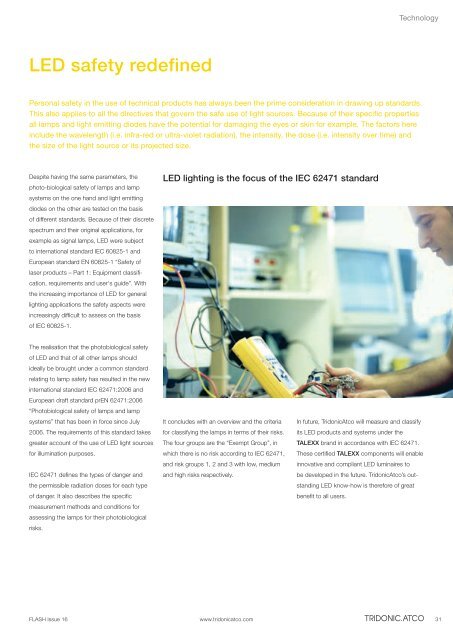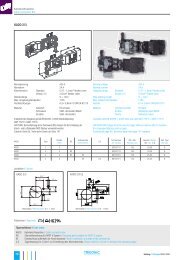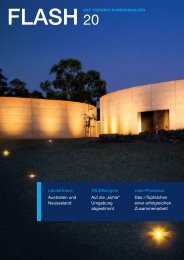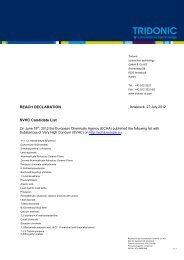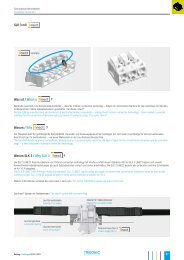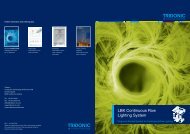FLASH issue 16 - Tridonic connection technology
FLASH issue 16 - Tridonic connection technology
FLASH issue 16 - Tridonic connection technology
You also want an ePaper? Increase the reach of your titles
YUMPU automatically turns print PDFs into web optimized ePapers that Google loves.
Technology<br />
LED safety redefined<br />
Personal safety in the use of technical products has always been the prime consideration in drawing up standards.<br />
This also applies to all the directives that govern the safe use of light sources. Because of their specific properties<br />
all lamps and light emitting diodes have the potential for damaging the eyes or skin for example. The factors here<br />
include the wavelength (i.e. infra-red or ultra-violet radiation), the intensity, the dose (i.e. intensity over time) and<br />
the size of the light source or its projected size.<br />
Despite having the same parameters, the<br />
photo-biological safety of lamps and lamp<br />
systems on the one hand and light emitting<br />
diodes on the other are tested on the basis<br />
of different standards. Because of their discrete<br />
spectrum and their original applications, for<br />
example as signal lamps, LED were subject<br />
to international standard IEC 60825-1 and<br />
European standard EN 60825-1 “Safety of<br />
laser products – Part 1: Equipment classification,<br />
requirements and user‘s guide”. With<br />
the increasing importance of LED for general<br />
lighting applications the safety aspects were<br />
increasingly difficult to assess on the basis<br />
of IEC 60825-1.<br />
LED lighting is the focus of the IEC 62471 standard<br />
The realisation that the photobiological safety<br />
of LED and that of all other lamps should<br />
ideally be brought under a common standard<br />
relating to lamp safety has resulted in the new<br />
international standard IEC 62471:2006 and<br />
European draft standard prEN 62471:2006<br />
“Photobiological safety of lamps and lamp<br />
systems” that has been in force since July<br />
2006. The requirements of this standard takes<br />
greater account of the use of LED light sources<br />
for illumination purposes.<br />
IEC 62471 defines the types of danger and<br />
the permissible radiation doses for each type<br />
of danger. It also describes the specific<br />
measurement methods and conditions for<br />
assessing the lamps for their photobiological<br />
risks.<br />
It concludes with an overview and the criteria<br />
for classifying the lamps in terms of their risks.<br />
The four groups are the “Exempt Group”, in<br />
which there is no risk according to IEC 62471,<br />
and risk groups 1, 2 and 3 with low, medium<br />
and high risks respectively.<br />
In future, <strong>Tridonic</strong>Atco will measure and classify<br />
its LED products and systems under the<br />
TALEXX brand in accordance with IEC 62471.<br />
These certified TALEXX components will enable<br />
innovative and compliant LED luminaires to<br />
be developed in the future. <strong>Tridonic</strong>Atco’s outstanding<br />
LED know-how is therefore of great<br />
benefit to all users.<br />
<strong>FLASH</strong> Issue <strong>16</strong><br />
www.tridonicatco.com 31


